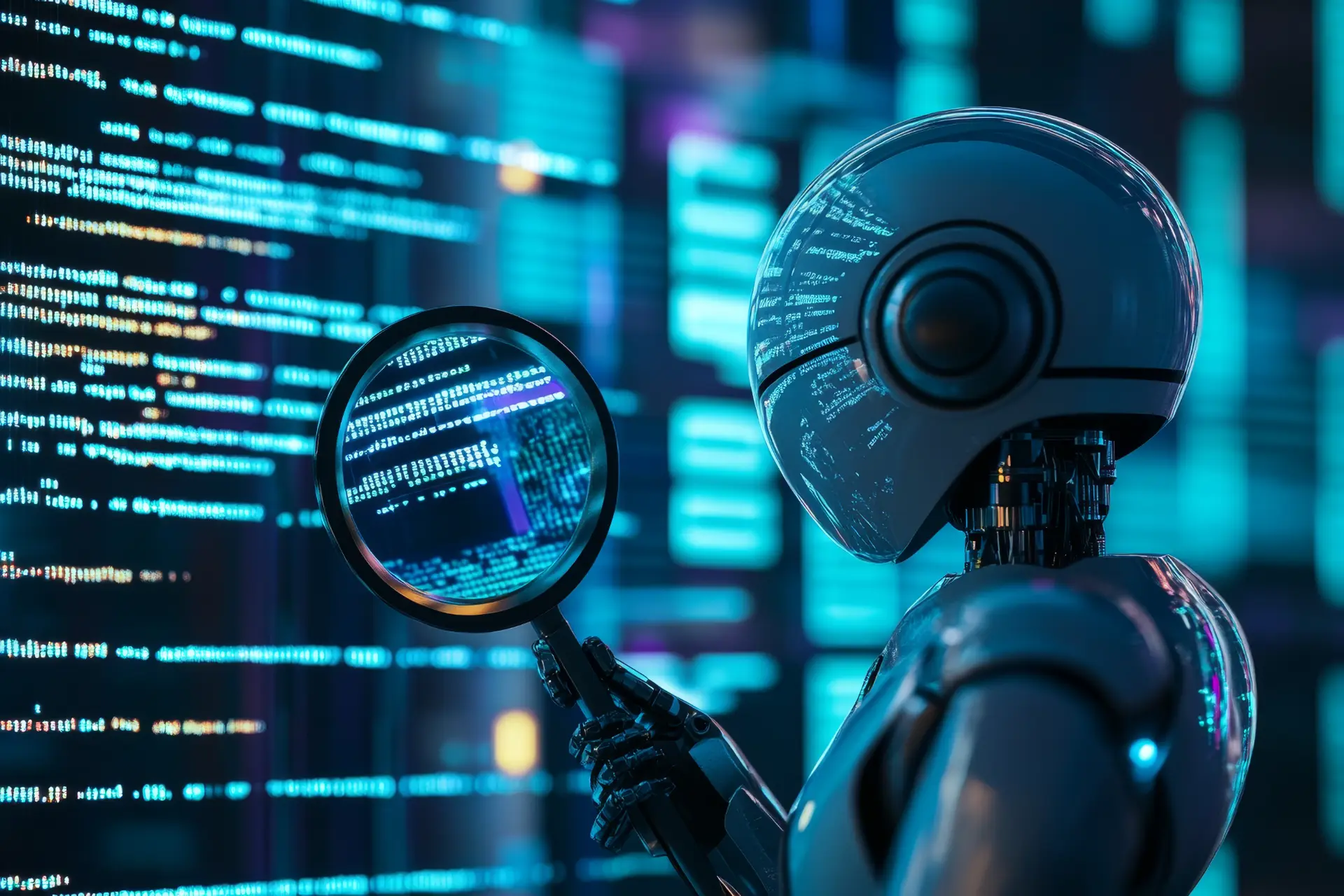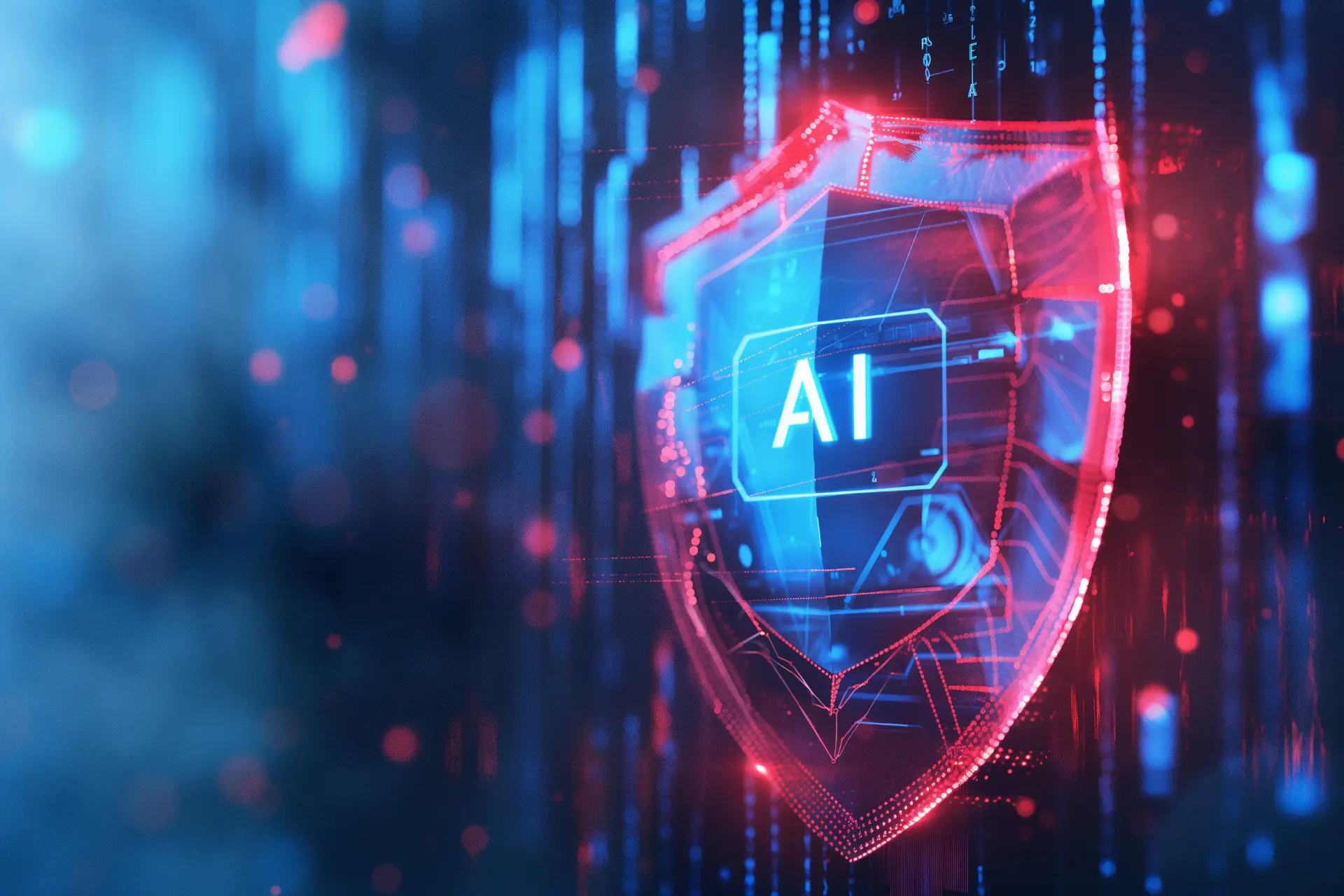Table of contents
- Artificial intelligence as defense and attack in cyber security
- Artificial intelligence as a cyber attack tool
- The challenge: leveraging AI while avoiding its pitfalls
In recent years, artificial intelligence (AI) has become a fundamental tool for cyber security, serving both to enhance defense strategies and to create new methods of cyber attack.
The constant growth of cyber threats, along with increasingly targeted and complex cyber attacks, has made an advanced technological approach essential for protecting systems and sensitive data.
Artificial intelligence as defense and attack in cyber security
However, the same potential of AI that security teams can harness is equally valuable to cybercriminals.
Let’s look at how artificial intelligence as defense and offense in cyber security is changing the digital landscape and what the risks and opportunities are.
One of the most significant advantages of using artificial intelligence systems in cyber security is their ability to analyze large volumes of data in real time.
This enables the rapid identification of potential threats and the prevention of unauthorized access.
Example
Machine learning technologies can detect anomalies in user behavior, which may indicate suspicious or malicious activity.
A critical benefit is its ability to reduce false positives, a common issue in traditional security systems. By continuously learning from data, AI improves its ability to differentiate between normal and suspicious activity, ensuring more accurate monitoring.
In addition, artificial intelligence can be integrated with predictive analysis tools to identify new threats before they can cause significant damage.
Some concrete examples include:
- Solutions such as Darktrace, which use AI to detect weaknesses in network systems and prevent targeted attacks
- Advanced systems such as CrowdStrike Falcon, which combine AI and behavioral analysis to protect endpoints and infrastructure
Artificial intelligence as a cyber attack tool
While artificial intelligence is an indispensable tool for improving cyber security, it also represents a powerful weapon in the hands of cybercriminals.
With its ability to learn, adapt, and automate complex processes, AI is transforming how cyber attacks are executed, making them harder to detect and counter.
Intelligent phishing and spear-phishing
An emblematic example of artificial intelligence as a cyber attack is the creation of highly sophisticated phishing campaigns.
Using machine learning techniques, attackers can analyze vast amounts of data gathered online, such as social profiles, email addresses, and digital habits of their targets.
These insights are used to craft highly personalized messages, known as spear-phishing, that are convincing and hard to distinguish from legitimate communications.
Example
A fraudulent email could perfectly mimic the writing style of a colleague or supplier, tricking the victim into providing login credentials or other sensitive information.
Adaptive and evolving malware
AI also enables the development of evolving malware, malicious programs designed to continuously change their code and behavior.
This type of malware, known as polymorphic, can:
- Evade detection by traditional antivirus software
- Adapt to target system defenses, rendering standard countermeasures ineffective
Example
AI-powered malware analyzes system vulnerabilities during infection, modifying its actions to maximize damage or steal information without being detected.
Intelligent botnets
Botnets are networks of compromised devices, often used to launch distributed denial of service (DDoS) attacks. With the use of AI, these networks become much more powerful and sophisticated.
An intelligent botnet is capable of:
- Coordinate attacks in real time, adapting to the target’s defenses
- Identify network weaknesses before launching an attack
- Distribute the attack load to avoid detection by automated defenses
Attacks on cryptocurrencies
The cryptocurrency ecosystem is an attractive target for cybercriminals.
AI is used to analyze transaction behavior, identify vulnerable wallets, and exploit weaknesses in exchange systems or digital asset management applications.
Example
An attack could aim to manipulate blockchain consensus algorithms or predict private keys through advanced distributed computing methods.
The use of AI allows these attacks to be faster and more effective than traditional techniques.
Deepfake technology for fraud
Another disturbing use of artificial intelligence in cyber attacks involves deepfakes, extremely realistic but falsified multimedia content.
Deepfakes, created through advanced neural networks, can be used to:
- Trick victims into authorizing fraudulent payments based on fake videos or audio of a superior
- Spread misinformation or damage the reputation of individuals and companies
These attacks pose a growing threat, particularly in the context of business negotiations and political elections.
Automatic exploit generation
Finally, AI is used to identify and exploit vulnerabilities in IT systems.
Automatically generated exploits can:
- Scan thousands of networks for weaknesses
- Create attack codes tailored to each identified system
- Spread autonomously without requiring manual intervention from the attacker

The challenge: leveraging AI while avoiding its pitfalls
For security teams, the main challenge is staying ahead of cybercriminals‘ evolving capabilities.
Organizations must invest in AI solutions that can not only detect and prevent attacks but also respond quickly to breaches.
At the same time, adopting an ethical approach to the use of artificial intelligence in cyber security is essential.
Algorithms must be transparent and designed to minimize risks of abuse or manipulation. Additionally, companies should combine AI with human expertise, creating a balance between automation and manual oversight to tackle new threats.
Lastly, collaboration among companies, governments, and researchers is key to developing global standards and improving protection against cybercriminals exploiting AI.
In conclusion…
Artificial intelligence as defense and attack in cyber security represents one of the greatest technological revolutions of our time.
On one hand, it offers powerful tools to protect data and strengthen defenses against cyber attacks. On the other, it paves the way for new threats, making attacks harder to detect and counter.
The key to the future will be a strategic and responsible use of AI, capable of anticipating cybercriminals‘ moves and ensuring a safer digital environment for everyone.
Questions and answers
- What is AI in cyber security?
AI in cyber security uses advanced algorithms to detect and prevent cyber attacks by analyzing large amounts of data. - How does AI protect personal data?
AI monitors user behavior, detects anomalies, and identifies potential threats to prevent breaches. - What are the risks of AI as a cyber attack tool?
AI-powered attacks include personalized phishing, adaptive malware, and intelligent botnets. - Can AI prevent cryptocurrency attacks?
Yes, with predictive analysis and anomaly detection, AI protects digital wallets and exchange platforms. - What are false positives in cyber security?
False positives are incorrect alerts that identify normal activities as threats; AI helps reduce them. - What are the most common AI tools for security?
Examples include Darktrace for networks and CrowdStrike Falcon for endpoint protection. - How do cybercriminals use AI?
They use AI for sophisticated attacks, such as spear-phishing and adaptive malware. - Can AI replace security teams?
No, but it can assist them by analyzing data and improving responses to attacks. - How can the abuse of AI in cyber security be prevented?
With transparency, human oversight, and global standards for ethical technology use. - Is AI effective against zero-day attacks?
Yes, through predictive analysis, AI can detect unknown vulnerabilities before they are exploited.
